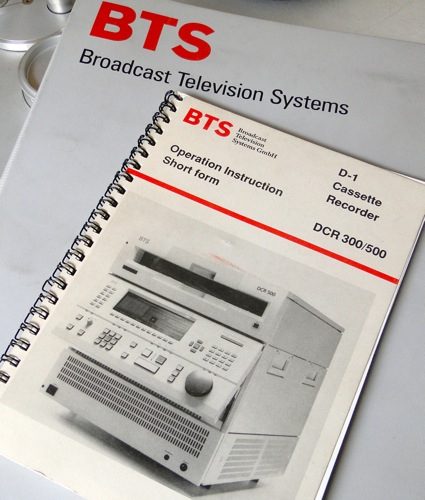A recent addition to the Greatear digitising studio is a BTS D-1 digital video cassette recorder.
As revolutionary as it was at the time, early digital audio and video tape recording is more threatened with obsolescence than earlier analogue formats.
Introduced in 1986, D-1 was the very first, real-time, digital broadcast-quality tape format. It stored uncompressed digitized component video, had uncompromising picture quality and used enormous bandwidth for its time. The maximum record time on a D-1 tape is 94 minutes.
Enormous is certainly the word for the D-1 tape! Compared with the so-called ‘invisible’ nature of today’s digital data and the miniDV introduced in 1998, this tape from 1992 is in comedy proportions.
D-1 was notoriously expensive and the equipment required large infrastructure changes in facilities which upgraded to this digital recording format.
Early D-1 operations were plagued with difficulties, though the format quickly stabilized and is still renowned for its superb standard definition image quality, sometimes referred to as a ‘no compromise’ format.
D-1 kept the data recorded as uncompressed 8bit 4:2:2, unlike today where compression is required for digital data to save space and time for practical delivery to the home, but sacrificing the picture and sound quality in the process.
D1 was supplanted by subsequent D models that recorded component (D-5) and composite (D-2 and D-3) signals.
Read more about digitising D-1 (Sony) component and D-2 (Ampex) composite 19mm digital video cassettes and D-3 composite and D-5 uncompressed component (Panasonic) digital video cassettes on our project pages.

So the D1 Video(cassette) tape has had a possible range of Oersteds of from 800 Oe(minimum) to 1000 Oe(maximum)?